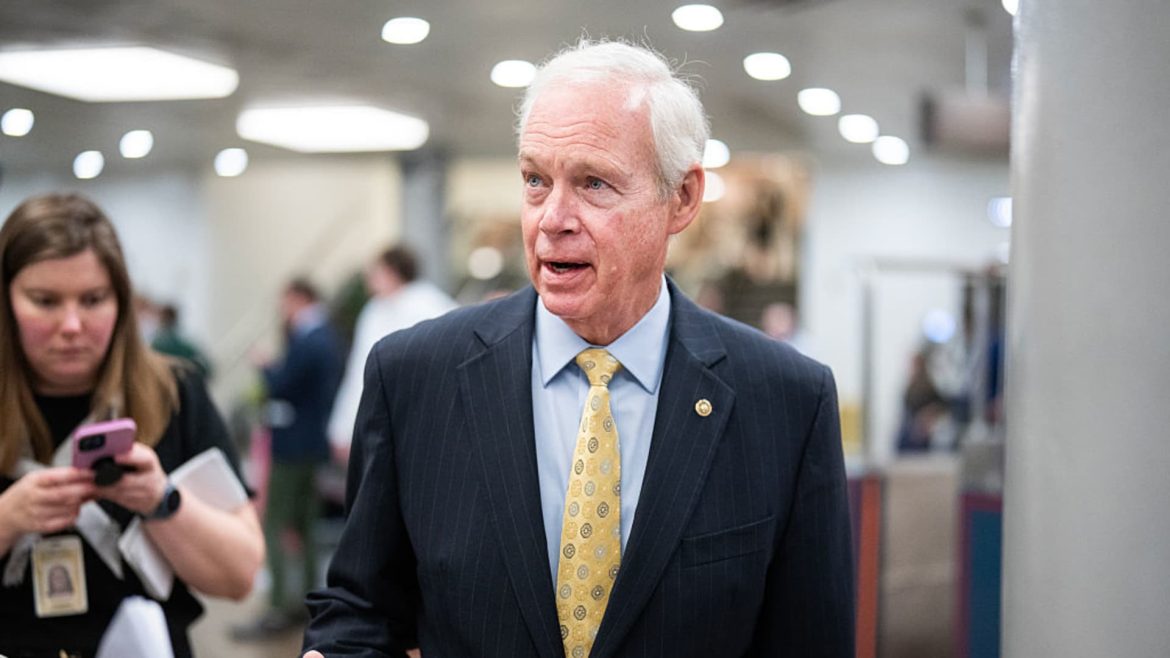Navigating the Complex Terrain of House Republicans’ “Big Beautiful Bill”
A recent legislative effort spearheaded by House Republicans has brought forward a sweeping budget and policy package aligned with former President Trump’s priorities. Branded the “big beautiful bill,” this comprehensive proposal is designed to advance key domestic and fiscal agendas. While it successfully passed the House by a narrow margin, the journey ahead in the Senate appears fraught with ideological hurdles, fiscal critiques, and strategic recalibrations.
The Composition and Objectives of the “Big Beautiful Bill”
The bill encapsulates a multitrillion-dollar blend of tax cuts and spending initiatives reflecting top priorities from the Trump administration. Central features include changes to Medicaid, adjustments related to State and Local Tax (SALT) deductions, and significant tax reforms. The package aims to stimulate economic growth while embedding conservative policy preferences.
However, these ambitions come with weighty fiscal implications. A Congressional Budget Office (CBO) analysis projects an addition of approximately $3.8 trillion to the national debt over a decade, a stark figure that has provoked rigorous debate among lawmakers.
Senate Pushback and GOP Intramural Tensions
Despite the bill’s passage in the House, Senate Republicans have resisted its current form. Key senators, notably Sen. Ron Johnson, have criticized the package for escalating the deficit substantially without sufficient deficit-reduction measures. Johnson has openly declared his opposition unless the bill incorporates more robust fiscal restraint, underscoring a growing split between House ambitions and Senate prudence.
The Senate GOP’s reluctance largely centers on the projected debt increase, with several members advocating for a more incremental approach. Senate Majority Leader John Thune has indicated a preference for dividing the legislation into two parts—deferring Medicaid changes to a subsequent bill and focusing the initial effort more narrowly on tax provisions. This two-bill strategy reflects an effort to manage GOP factions and enhance the likelihood of legislative success.
Negotiations and Political Stakes Within the Republican Caucus
The legislative threads reveal a fractious Republican coalition. Some House conservatives have expressed reservations about the Senate’s proposed modifications, fearing dilution of Trump’s signature policies. Conversely, more fiscally hawkish Republicans caution against adding to the national debt in unsustainable ways. The push-pull dynamic between preserving political priorities and endorsing fiscal responsibility has made internal consensus elusive.
House Speaker Kevin McCarthy and other GOP leaders have sought to downplay deficit concerns, emphasizing the package’s benefits and portraying dissenting voices as outliers. Yet, these internal disputes underscore the broader challenge of uniting diverse GOP interests behind a single, expansive budget package.
Broader Implications: Debt, Deficits, and Policy Outcomes
The projected $3.8 to $4 trillion increase in debt borne by this bill places it under intense scrutiny, especially in the context of ongoing concerns about the nation’s fiscal trajectory. While proponents argue that tax cuts and reforms will spur growth enough to offset debt increases, opponents warn that the rising deficits could jeopardize economic stability and burden future generations.
Additionally, policy outcomes such as potential increases in uninsured Americans — estimated around 10 million as per CBO projections — raise questions about the social impact of the bill’s Medicaid provisions and other healthcare-related elements.
The Road Ahead: Strategic Complications in the Senate
Following its House passage, the bill now confronts a Senate environment where GOP leaders signal intent to amend and possibly pare down the package. The Senate’s approach appears more cautious, with a preference for splitting legislative efforts and mitigating fiscal risks.
This sets the stage for complex negotiations, where the House must decide how much compromise is feasible without alienating key constituents and core supporters of the Trump agenda. The Senate’s resistance effectively draws new battle lines, framing legislative strategy for the coming weeks and months.
Conclusion: Charting a Pragmatic Path Through Political and Fiscal Crosswinds
The “big beautiful bill” reflects a bold attempt by House Republicans to enact sweeping policy changes aligned with former President Trump’s priorities. Yet, the realities of Senate skepticism, fiscal concerns highlighted by the CBO, and ideological fissures within the GOP reveal the complexity behind transforming ambitious agendas into law.
Success will likely require a delicate balancing act—preserving core policy goals while accommodating prudent deficit management and garnering Senate support. The unfolding negotiations illuminate key tensions in contemporary American conservatism: between expansive governance and fiscal conservatism, between ideological purity and legislative pragmatism.
Ultimately, whether the “big beautiful bill” becomes law in its current form or evolves into a pared-down alternative, it serves as a testament to the intricate interplay of politics, policy, and economic stewardship shaping the nation’s future.





